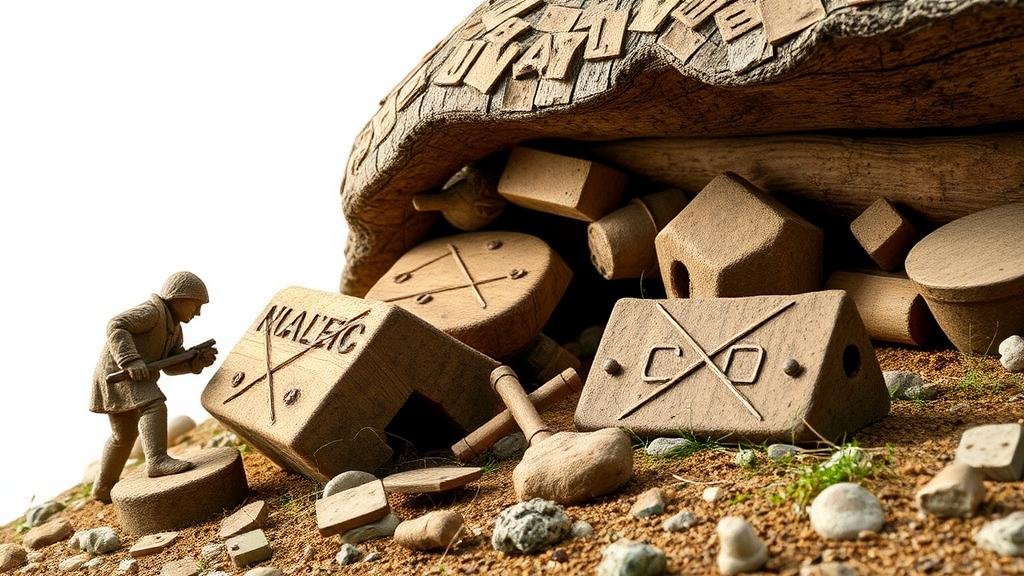Using Local Folklore and Oral Histories to Locate Artifacts and Relics
Using Local Folklore and Oral Histories to Locate Artifacts and Relics
The study of local folklore and oral histories has long been recognized as an integral part of anthropology and archaeology. This article explores the significant role that these cultural narratives play in the identification and location of artifacts and relics. By examining case studies and relevant literature, we can better understand how folklore and oral traditions can effectively guide archaeological research.
The Importance of Folklore and Oral Histories
Folklore encompasses the myths, legends, and traditional tales of a community, while oral history involves the recorded recollections of individuals regarding historical events. Both serve as crucial sources for uncovering historical truths, often filling gaps left by written records. The significance of these sources can be illustrated in various ways:
- They provide cultural context, enriching our understanding of the communities involved.
- They often reveal locations of historical significance, including where artifacts may be found.
- They give voice to local communities, ensuring diverse perspectives are included in historical narratives.
Case Studies: Successful Applications
The Tlingit Clan and the Discovery of the Naa Kahidi
A notable example can be found in the Tlingit clans of Alaska, where the oral history of Naa Kahidi–a traditional clan house–helped researchers locate significant archaeological sites. Archeologist Doug Deur collaborated with Tlingit elders who recounted tales about the original locations of numerous clan relics. r guidance led to the uncovering of ceremonial objects that had been hidden or lost during colonization.
New Englands Colonial Artifacts and Local Myths
In New England, local folklore often recounts tales of hidden treasures or lost items from colonial settlers. Archaeologist Lally Hattrup used such accounts to focus excavation efforts on sites near known historical settlements. A 2010 dig near Salem, Massachusetts yielded several significant artifacts, including 17th-century pottery and metal tools, confirming connections made through these oral legends.
Challenges in Utilizing Folklore and Oral Histories
Despite the advantages, there are challenges associated with relying on folklore and oral histories:
- Subjectivity: Oral histories may exhibit bias, as storytellers interpret events through personal or cultural lenses.
- Inconsistencies: Variations can arise in folklore traditions, leading to conflicting accounts that complicate archaeological interpretation.
To mitigate these issues, researchers often corroborate folklore with physical evidence and documentary history. A holistic approach helps to create a clearer picture of the past.
Methodologies for Integration
To effectively use folklore and oral histories in archaeological research, a blend of methodologies is recommended:
- Community Engagement: Involving local communities not only offers access to oral histories but also fosters trust and collaboration.
- Interdisciplinary Approach: Collaboration among historians, anthropologists, and archaeologists can enrich the research process and findings.
- Field Surveys: Conducting surveys based on folklore references can lead to the discovery of previously uncharted sites.
Real-World Applications
Numerous archaeological projects worldwide have demonstrated the successful application of folklore and oral history methodologies. For example:
- In Zimbabwe, the discovery of ancient rock art was facilitated by local folklore that described the significance of certain rocky outcrops.
- The use of oral histories in Australia has led to the identification of Indigenous burial sites, providing valuable insights into the country’s pre-colonial history.
Conclusion and Actionable Takeaways
Incorporating local folklore and oral histories into archaeological research presents a unique and powerful avenue for uncovering artifacts and relics. The collaboration between scholars and local communities not only enhances the research process but also promotes the preservation of cultural heritage. Future archaeological endeavors should consider the following:
- Establish partnerships with local communities to collect oral histories.
- Use a multidisciplinary approach that engages various fields of study.
- Always triangulate findings with tangible evidence and documentary research to ensure accuracy and reliability.
By embracing these strategies, archaeologists can unlock hidden histories and foster a deeper appreciation for the cultural narratives of local communities.



